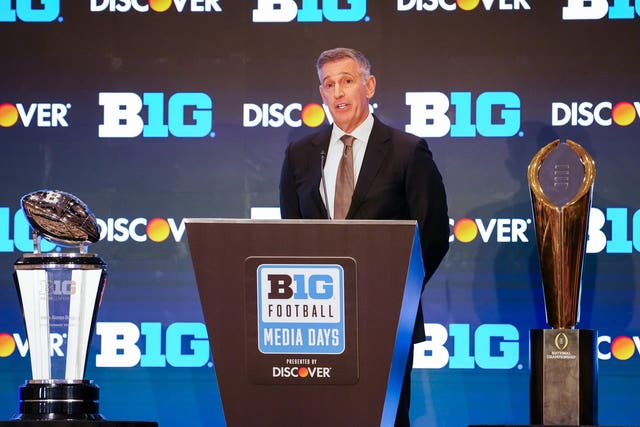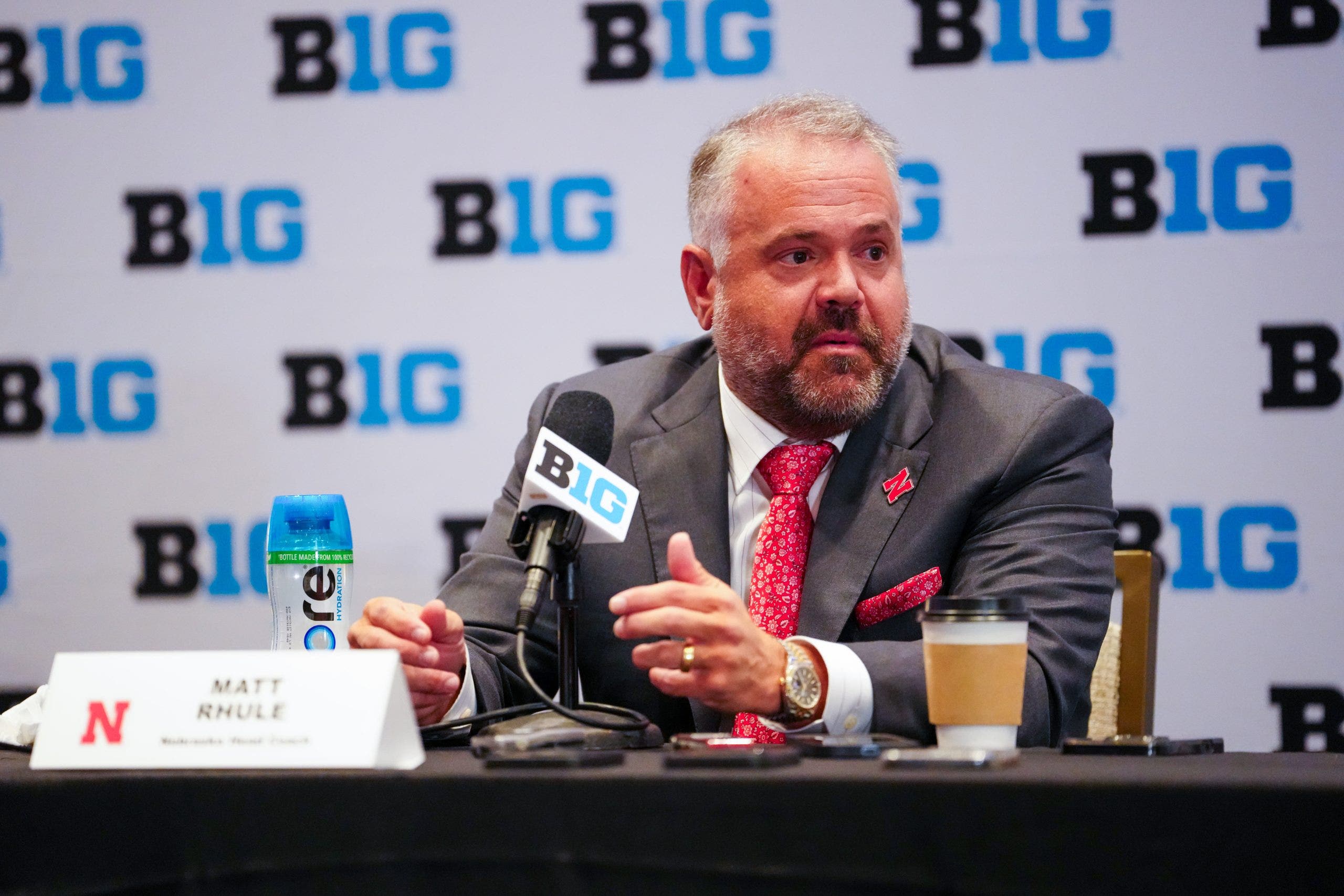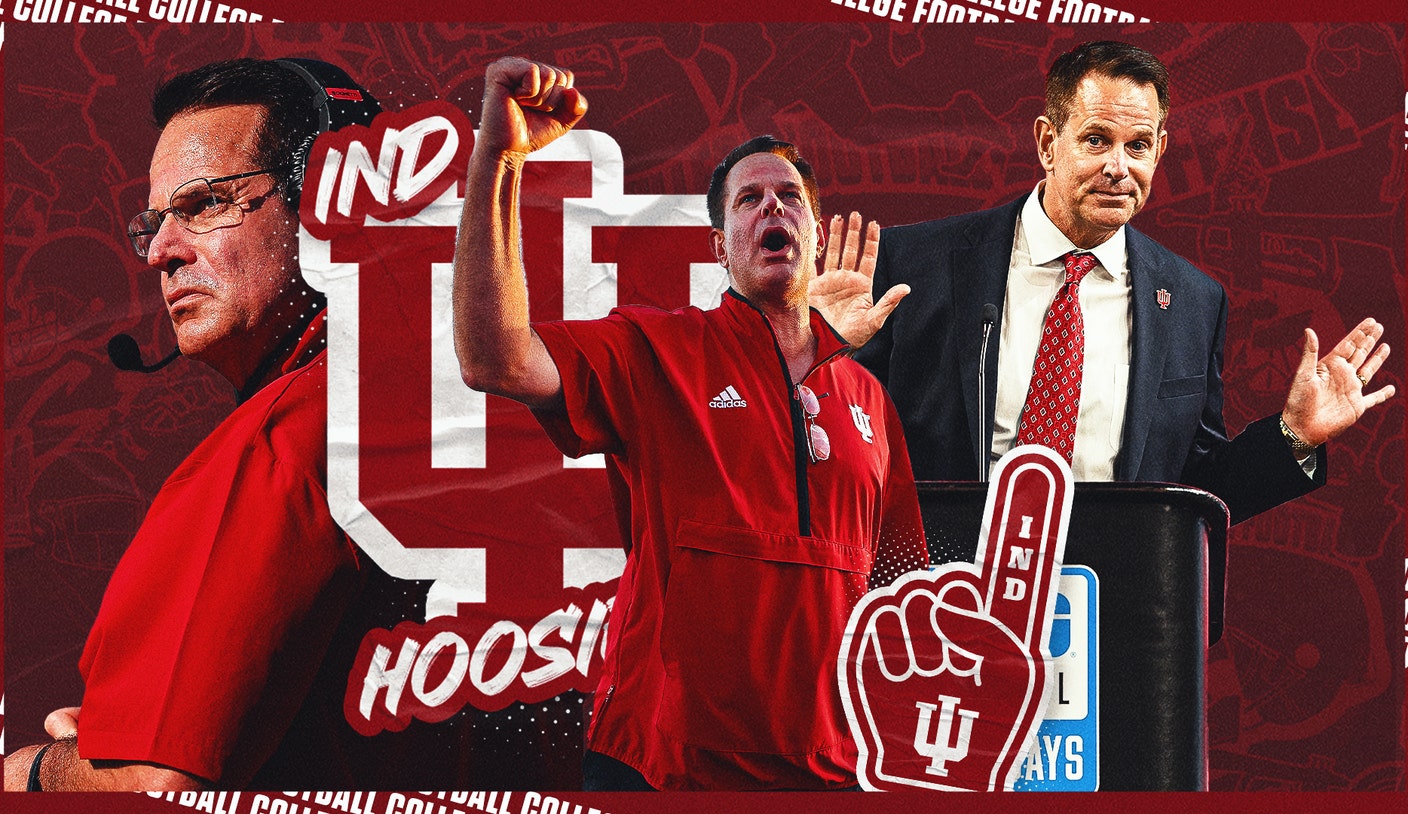Curt Cignetti’s Viral Quote Captures Overarching Message at Big Ten Media Days
LAS VEGAS — On this same stage at this same event last summer, only a few months into his tenure as Indiana’s new head coach, Curt Cignetti announced himself to the college football world with an impassioned opening statement that dripped with jaw-dropping confidence for someone leading a power-conference program for the first time.
Cignetti admonished the media members in attendance for picking the Hoosiers to finish 17th in the newly expanded Big Ten. And five months later, after rolling through the greatest regular season in program history, Cignetti proved he could walk the walk by leading Indiana to the College Football Playoff.
One year and one hefty contract extension later, Cignetti opened Big Ten Media Days with another headline-making display, firing a shot across the SEC’s bow when asked why the Hoosiers recently agreed to pay $500,000 to extricate themselves from a home-and-home scheduling agreement with Virginia and replace those games with likely blowouts against Kennesaw State in 2027 and Austin Peay in 2028. More than five years will pass between now and the next time Indiana kicks off against a high-level, non-conference opponent.
“We figured we would just adopt SEC scheduling philosophy, you know?” Cignetti said on Tuesday afternoon. “Some people don’t like it. I’m more focused on those nine conference games. Not only do we want to play nine conference games, OK, and have the [revised] playoff format [with automatic qualifiers], we want to have play-in games to decide who plays in those playoffs.”
Though wrapped around an obvious barb in the ongoing power struggle between the Big Ten and the SEC, college football’s preeminent conferences, Cignetti’s whip-like rebuttal accurately captured the overarching message from commissioner Tony Petitti and the first wave of head coaches to address the media at this year’s preseason gathering, where potential changes to the CFP format — changes that would kick in next year — and the accompanying concerns about scheduling were among the leading topics of conversation.
The league rallied around Petitti’s preference for a 4-4-2-2-1 model that relies far more heavily on automatic qualifiers than at-large berths, and in doing so, it challenged the SEC to adopt a regular-season schedule that would match the Big Ten’s commitment to nine conference games, leveling the playing field to ease comparisons during playoff selection.

Big Ten Commissioner Tony Petitti speaks during the 2025 Big Ten Football Media Days at Mandalay Bay Convention Center. (Photo by Louis Grasse/Getty Images)
What type of tone Petitti would employ during his opening remarks on Tuesday was of widespread interest to the sport’s powerbrokers amid an offseason that has seen the other three power conferences — the SEC, the Big 12 and the ACC — coalesce around a different proposed playoff format, the “5+11” model, which features more than twice as many at-large berths as automatic qualifiers. Though long preferred by the Big 12 and the ACC, two leagues struggling to keep pace atop the sport, the “5+11” framework only recently emerged as the SEC’s choice, with outspoken commissioner Greg Sankey beating that drum at his league’s media days event in Atlanta earlier this month. Sankey and the SEC’s coaches believe their conference’s depth and strength of schedule project favorably onto a model with more at-large spots up for grabs.
Such a worldview clashes with the automatic qualifier system preferred by Petitti and his constituents. The 4-4-2-2-1 model would allocate four bids each to the Big Ten and SEC, two apiece to the Big 12 and ACC, and one for the highest-ranked Group of Six champion, with three at-large berths left over in a proposed 16-team field. As a corollary, Petitti has also proposed that the Big Ten play league-specific play-in games over championship weekend that would pit teams from outside the top two in the conference standings against each other for an automatic spot in the playoff, an idea his coaches seem to widely endorse — even if the SEC disagrees.
“We’re obviously not in the same place on these discussions,” Petitti said when asked about the impasse between the Big Ten and the SEC, two leagues that have the right to control changes to the CFP format and selection committee process moving forward. “I think there’s lots of ideas. I think the goal would be to bring people back together, have a conversation of what we think works and kind of go from there. I will say, every time we’ve come together with the two leagues — we still have our presidents and advisory group meeting — good things have happened.”
One of the reasons Petitti favors a model heavy on automatic qualifiers is because he feels it would offset the scheduling discrepancy between the Big Ten, which plays nine conference games each year, and the SEC, which only plays eight. The added difficulty of an extra conference opponent, Petitti believes, could leave Big Ten teams exposed during the selection process for a playoff rich with at-large bids.
This is especially true if the SEC continues racking up victories against lower-level opponents in exchange for playing one less league game. Many SEC schools schedule an FCS opponent late in the season to break up the grueling conference grind, all but assuring themselves of a lopsided win in the process. This year’s slate includes Ole Miss hosting The Citadel on Nov. 8, Kentucky hosting Tennessee Tech on Nov. 15 and Alabama hosting Eastern Illinois on Nov. 22, among others, which gave Cignetti ammunition for his quip about Indiana copying the SEC’s scheduling philosophy by adding games against lesser opponents.
“We need to standardize the schedule across the board if we want to have objective criteria for who should be in the playoffs and who shouldn’t,” Cignetti said. “And we need to take the decision-making off the committee to some degree.”
“I feel like until there’s continuity between conferences,” Ohio State head coach Ryan Day said, “if you’re in the Big Ten, it would make no sense to have anything other than a case to have four [automatic] qualifiers and have an expanded pool of teams. Because when you play nine conference games, it’s not the same as somebody who plays eight conference games. And so, if you’re going to be compared against that, then it’s just not the same.”
“I just think all the leagues should play the same amount of conference games,” Nebraska head coach Matt Rhule said.

Nebraska head coach Matt Rhule speaks during the 2025 Big Ten Football Media Days at Mandalay Bay Convention Center. (Photo by Louis Grasse/Getty Images)
All of which distills into a veritable chicken-or-the-egg discussion for Petitti, who believes the issues of conference scheduling and CFP selection process “go hand in hand.” He doesn’t want to commit to a playoff format without knowing how many conference games each league is playing. And he is adamant that the number of conference games each league is playing should influence the selection committee’s criteria for inclusion in the playoff field. That’s why Petitti and the Big Ten coaches will continue to dig their heels in regarding automatic qualifiers unless or until the SEC adds a ninth conference game.
So for now, and perhaps a good while longer, the stalemate between college football’s two best conferences has strengthened into a high-stakes standoff.
“Each league,” Petitti said, “will decide what they think the best conference schedule is for them.”
Michael Cohen covers college football and college basketball for FOX Sports. Follow him at @Michael_Cohen13.
Want great stories delivered right to your inbox? Create or log in to your FOX Sports account, and follow leagues, teams and players to receive a personalized newsletter daily!
recommended

Get more from the College Football Follow your favorites to get information about games, news and more
editor's pick
latest video
Sports News To You
Subscribe to receive daily sports scores, hot takes, and breaking news!




